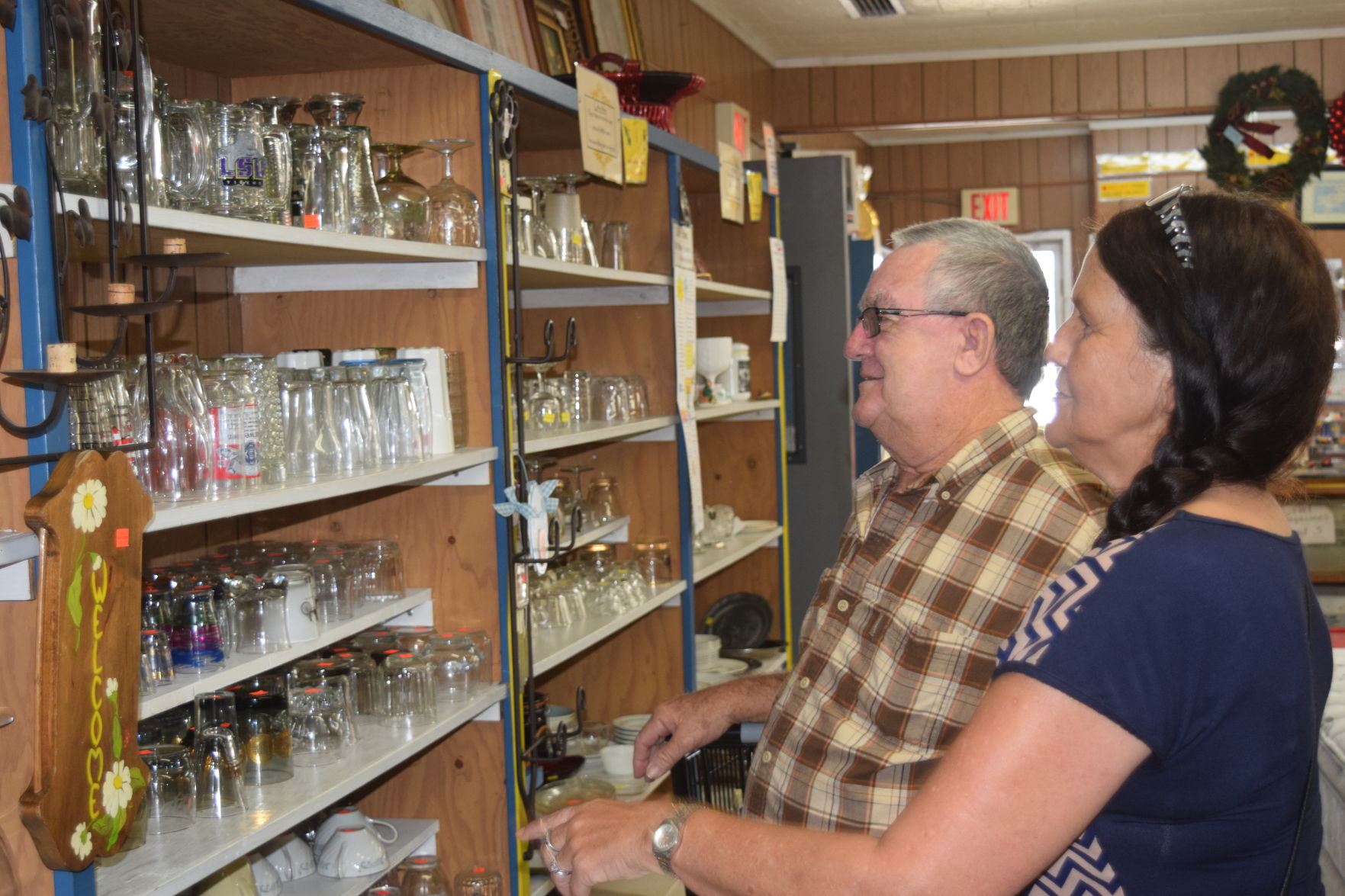
A little something for everyone: St. Vincent de Paul eagerly awaits opening
September 6, 2016
Houma couple falls through cracks in police procedures
September 6, 2016A university’s attempts to reconcile a troubling chapter in its history is echoing in Terrebonne and Lafourche, as researchers connect dots spanning centuries between slaves the school once owned and sold, and their living descendants.
Georgetown University President John DeGioia last week announced plans for contrition that are to include preferred admission for descendants of the school’s former slaves, a public memorial and creation of an institute to study slavery itself.
More than 50 of the 272 slaves that Georgetown’s Jesuit priests sold off in 1838 to pay mounting debt ended up in Terrebonne Parish, and later sold to other plantations including some in Lafourche. The remainder of the 272 went to plantations in Iberville and Ascension parishes. The transactions brought Georgetown $3 million.
Researchers are focusing on modern-day members of the Mahoney and Queen families, who primarily live in Raceland and Mathews.
“This original evil that shaped the early years of the Republic was present here,” DeGioia said at a commemorative gathering on Georgetown’s Washington, D.C. campus. “We have been able to hide from this truth, bury this truth, ignore and deny this truth.”
In 2015 the university convened its Working Group on Slavery, Memory, and Reconciliation “to explore this history, to engage the community in dialogue, and to outline a set of recommendations to guide future efforts. The report of the Working Group, which DeGioia referenced last Thursday, “is one step in a longer-term effort that will be informed by dialogue and engagement with members of our community and descendants.”
Overall the project has thus far identified some 2,000 descendants, both living and dead, of slaves held by Georgetown.
FLATBOATS ON THE BAYOUS
Researchers have been poring through archives at the clerk of court offices in Terrebonne and Lafourche to further the effort. They have initiated contact with various potential descendants. Their purpose is to identify as completely as possible the human connections from the past to the present. Ancestry.com is donating DNA kits to aid in the process.
“I learned that the Terrebonne group were the first group to arrive anywhere in Louisiana from Maryland,” said Baton Rouge-based researcher Judy Riffel, who leads the Louisiana effort. “They were gathered up from two plantations and sent on ships, it was fifty some-odd in the Terrebonne group that they put on a boat and sent in June of 1938 and they arrived in New Orleans in July. A document in the courthouse lists everyone who was on the boat. Some missed the boat and one was sent a few months later.”
Riffel said she believes that after arriving in New Orleans, the slaves were sent to Terrebonne on flatboats.
Their destination was a sugar plantation owned by Dr. Jesse Batey. Its lands made up much of what is now the community of Gray, just south of Schriever and north of Houma. Batey, whose name is sometimes spelled Beattie, was a doctor of dentistry whose holdings were expansive. The deal was rather complex, according to documents released by the university.
Founded in 1789 as Georgetown College, the school from its beginnings relied on income from tobacco plantations worked by enslaved people. Jesuit priests gained control of its board. The plantations continued to operate. But in the 1830s two prominent Jesuit priests, William McSherry and Thomas Mulledy, determined that the scheme was financially inefficient.
Small sales of slaves took place. Then in 1838 Father Mulledy was given the task of selling off the remaining slaves.
He found willing buyers in Jesse Batey and his business associated, U.S. Rep. Henry Johnson, a former governor of Louisiana and uncle of a Georgetown student.
SLAVES WANTED ROSARIES
Jesuit officials in Rome frowned on the idea of a mass slave sale, instead favoring their liberation. Mulledy demurred, and Rome put conditions on the sale. Families would not be separated. The slaves, who had been baptized and practiced Catholicism, would have their religious needs met and accommodated.
Historical records and accounts based on them strongly indicate that not everyone in the Jesuit community of Maryland was so sure.
The Rev. Thomas Lilly wrote in a letter to superiors that slaves from St. Thomas Manor were “dragged off by force to the ship and led off to Louisiana. The danger to their souls is certain.” Another Jesuit, Peter Havermans, wrote of the slaves’ “heroic courage and Christian resignation.”
Haverman related that an elder female slave had begged him to know what she had done to deserve being wrenched away from Maryland.
“All the others came to me seeking rosaries,” Haverman wrote.
The ship that bore the Georgetown slaves from Maryland was the schooner Unca, a 66-foot sailing vessel engaged in coastwise trade. At a New Orleans dock, they were transferred to the flatboat that completed the trip to Terrebonne, and the labor-intensive tasks of planting, cutting, hauling and scrapping cane. Georgetown officials acknowledge that the request for the Catholic faith to be kept was not honored, nor the requirement that families be kept together.
The Georgetown slaves in Terrebonne were owned jointly by Batey and Henry Claiborne Thibodaux, son of Henry Schuyler Thibodaux, founder of the eponymous seat of Lafourche Parish.
LINKING THE PAST
When Batey died he left no heirs. But there was a list of slaves he owned jointly with Thibodaux, who were determined to be the Georgetown slaves.
“After Jesse Batey died in 1851 they sold off most of those Georgetown slaves to individual buyers,” Riffel said. “There were some in northern Terrebonne. A lot of the buyers were in Lafourche. They got kind of dispersed at that point. There was also a pretty high mortality rate. It was a sugar plantation and the work was very hard.”
Montegut consultant Laura Browning assisted Houma author Christopher E. Cenac MD with his book on local plantations, “Hardscrabble to Hallelujah, Volume 1 Bayou Terrebonne: Legacies of Terrebonne Parish,” soon to be released by the University Press of Mississippi. They did research on the Batey plantation, which is included in the work. She also aided Riffel in retrieval of documents. Although she has worked with slave lists before, Browning said, the task was still disconcerting.
“There is such a sadness that becomes very real, to see the lack of value for another human being other than a price,” Browning said. “They are treated just as the horse is treated, or the bed linens. And it is that lack of humanity for another person that is haunting. They don’t have names. You don’t name the wagon. There was no humanity to it, just another part of the estate. There were children assigned a dollar value and the horse on the other page was assigned more value. You see a child but not recognition that there is the potential of a child.”
Nonetheless, Browning said, she recognizes that her task was to gather the data from yellowed pages sheathed in plastic, without judgement.
“My job is to put things in their place so that other people can use the information, in the hands of people who can do something with it,” Browning said.
SUIT FOR FREEDOM
The Mahoney, Queen and Campbell families of Terrebone and Lafourche are those most likely to be confirmed, said Riffel, adding that there may be some Harrisons in the mix.
“I have identified living descendants and two people are participating in the DNA study,” she said. Ancestry.com, in addition to donating kits, has also promised an expert to help organize and interpret the data, as may be relevant to matching families.
The bloodlines of two known Georgetown slaves, Abraham Mahoney and Mary Ellen Queen, have been essential to the local search. One of their children, Eva Mahoney, was born around 1856 near Gibson and died in 1917 in Mathews. The Queen family holds a unique niche in history, with more than two dozen of its members suing the Jesuits for freedom in the last decade of the Eighteenth Century. The suits – with Star Spangled Banner writer Francis Scott Key a fledgling attorney on the legal team – won some success. But legal waters became muddied on appeal, resulting in freedom for some Queens but not for all. Members of the family branch kept in bondage were among the slaves flat-boated to Terrebonne Parish, various records have confirmed.
Melisande Short-Colomb, a chef at Langlois Culinary Crossroads in New Orleans, is the great granddaughter of Stella Estella Johnson, daughter of Eva Mahoney. Short-Colomb was a frequent visitor to Matthews and Raceland, where she still has relatives.
“I grew up hearing about them,” she said of Abraham and Mary Ellen. “I had always thought the whole family was free. It wasn’t until three weeks ago that I realized that only a portion of the Queen family was freed, and that my ancestors were actually part of the slave sale. All I knew was that Mary and Abraham had come here on a boat from Baltimore. I did not know about Georgetown.”
She also knows of other roles her family members have played in history. Stella Johnson cared for a young Bonnie Mathews, heir to the Mathews family for whom the Lafourche Parish community is named, and traveled with her as a servant to New Orleans when she married John Minor Wisdom, the 5th Circuit U.S. Court of Appeal jurist who was instrumental in major court decisions that helped advance the civil rights movement.
PANDORA’S BOX
Short-Colombe is pleased, on the one hand, that the Georgetown project has been a help toward toward her knowing more of her own uniquely American story. As for the actions the university now takes, her response is mixed.
“It is a beginning to the pathway to truth and reconciliation, that Georgetown is to apologize for participation in slavery,” Short-Colombe said. “The apology does not negate that people were sold, that legacies and wealth had been built upon the backs of disenfranchised people, of enslaved people. What is reparation? We are due full right and inclusion in American society as Americans. In the twisting and turning of America there are lot of Americans black and white, all kinds of colors, who do not have a connection to American slavery. There are people who do and when those people can be identified that narrows the scope of a people. That also opens Pandora’s box”
That her own children or grandchildren will now have the option of legacy consideration should they wish to attend Georgetown University is also a beginning. That the offer of conciliation is being made by an institution whose history directly relates to the buying and selling of people in the name of preserving Catholic education makes it meaningful enough to her. She realizes that the idea of reparation or reconciliation is anathema to many whose families were not victims of America’s original sin.
“There has been a United States of America for more than 200 years, 500 years as a whole thing and 200 years as an actual independent country,” Short-Colombe said. “If you are an American, whenever your people came here, from wherever, my people have been here longer building America. You owe me a debt of gratitude. You owe a debt to my people.”
Intimate knowledge of slavery’s legacy and related injustice have long worn heavy on Short-Colombe’s spirit. It is one of the reasons why she has difficulty comprehending the level of outrage expressed over San Francisco 49ers player Colin Kaepernick’s recent refusals to stand for the National Anthem, the song whose idealistic author carried the legal papers to a Maryland courthouse seeking freedom for her ancestors.
“Colin Kaepernick is not the first person to not stand up,” she said. “I haven’t stood for the National Anthem since I was 14-years-old.” •












